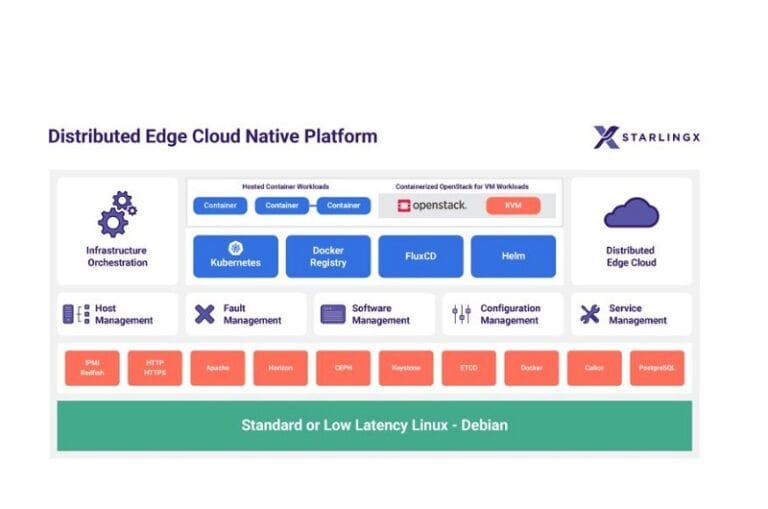StarlingX recently rolled out a new version of its distributed cloud platform or architecture for telecom applications. Version 10.0 offers more security, a better user experience, scalability, and a (Linux) kernel update, among other features.
StarlingX is a provider of a reliable, low-cost, and open-source distributed cloud platform focused specifically on applications for the telecom industry and interested enterprises. These include providing IoT, 5G, O-RAN, and edge computing functionality.
For this purpose, open-source applications and solutions are combined. These include the Linux kernel, the open-source software-defined storage platform Ceph, OpenStack, and Kubernetes for container infrastructure.
These solutions together provide telecom operators and enterprises with a fully functioning cloud software stack for deploying an edge cloud environment, whether it involves a few or hundreds of servers.
StarlingX says it can effortlessly handle the most demanding applications for industrial IoT environments, telecom networks, the delivery of (streaming) video or other use cases that require low latency or high performance.
New features
With the arrival of version 10.0 of the open-source distributed cloud platform, much additional functionality has been added. For example, there is now support for IPv4/IPv6 dual-stack functionality. Users can continue using both IP address pools and assign one as the primary.
Another new feature is a security improvement. StarlingX 10.0 now supports Harbor as a container registry by releasing it as a StarlingX system application. This helps better secure container images, Helm charts and more, among other things.
In addition, the user experience of the open-source distributed cloud platform has been further improved. Thanks to a new Unified Software Management Framework, deployment has been made more efficient. Among other things, patches and updates can now be deployed simultaneously via a REST API/CLI interface, both for a single cloud installation and a distributed cloud environment.
Other updates in v10.0
Other improvements in version 10.0 include a (Linux) kernel upgrade to the latest LTS release from the Yocto project, replacing kernel version 5.10 with v6.6. As a result, the StarlingX platform is supported by more hardware platforms and so-called in-tree device drivers, performance has improved, and previously unprocessed bug fixes have been implemented.
The open-source distributed cloud platform’s scalability has also been further increased, from 1,000 to 5,000 remote sites.
Furthermore, StarlingX 10.0 now supports more open-source projects than just the Linux kernel. For example, this version now also provides access to Kubernetes versions up to v1.29.
StarlingX 10.0 is available immediately.
Also read: Open Infrastructure Foundation introduces StarlingX 6.0
